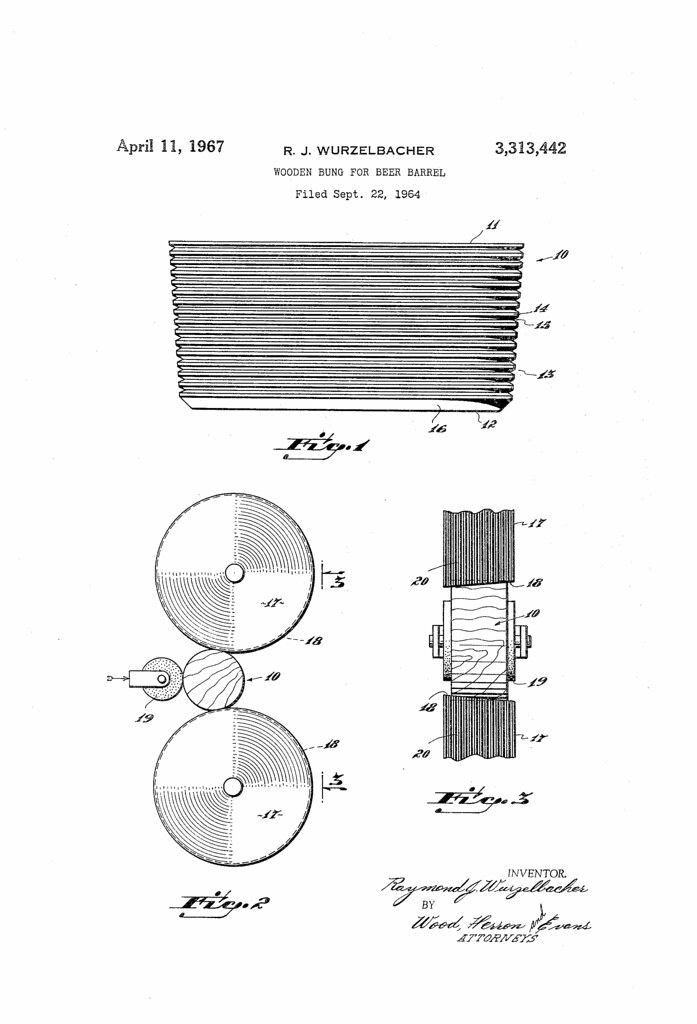
Today in 1967, US Patent 3313442 A was issued, an invention of Raymond J. Wurzelbacher, for his “Wooden Bung For Beer Barrel.” There’s no Abstract, although in the description it includes this summary:
The present invention embodies certain of the principles of the compression by rolling method just described. However, a materially improved bung is provided in that the tapered edges of the rollers have formed thereon a series of ridges and grooves which in turn impart a ridged and grooved construction to the bung blanks compressed by the rollers. It has been found that the provision of a series of closely adjacent ridges extending peripherally around the sides of the bung blank and compressed provide a materially improved bung insofar as concerns tight securance in the bushing and the prevention of leakage. This is partly due to the fact that each ridge, in effect, constitutes a separate gasket sealing the sides of the bung blank against the bushing or bung hole. Additionally, since all parts of the ridged surface are compressed the total area of compression is a great deal larger than on the ordinary smooth surface bung so that when liquid is applied to the grooves between the ridges, the expansion occurs much more rapidly and more completely than in the case of a smooth surface. There is also an increased and uniform denseness over the entire side surfaces because the depth of the grooves is uniform and more compression is required to from them than would be the case with smooth surfaces.
In order to manufacture a bung of the type to which the invention relates, it is necessary to use a rolling process and it is also necessary to insert the bung blank between the rollers in the same plane as the rollers and in a direction opposed to the rollers axes.
Accordingly, one of the objects of the invention has been to provide a hung for a beer barrel, the sides of which contain a plurality of closely adjacent parallel compressed ridges and corresponding grooves.
Another object has been to provide a wooden bung for a beer barrel in which the sides of the bung are compressed over an area substantially greater than the distance between the upper surface and lower surface of the bung.
Another object has been to provide a bung in which the sides are denser and the degree of denseness is more uniform than in the case of a smooth sided bung.

